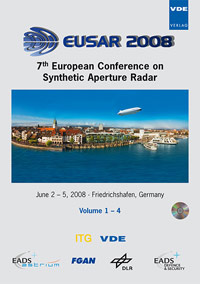TerraSAR-X SAR Payload Data Processing: Results from Commissioning and Early Operational Phase
Conference: EUSAR 2008 - 7th European Conference on Synthetic Aperture Radar
06/02/2008 - 06/05/2008 at Friedrichshafen, Germany
Proceedings: EUSAR 2008
Pages: 4Language: englishTyp: PDF
Personal VDE Members are entitled to a 10% discount on this title
Authors:
Breit, Helko; Fritz, Thomas; Schättler, Birgit (German Aerospace Center, (DLR), Remote Sensing Technology Institute, D-82234 Wessling, Germany)
Balss, Ulrich (Technical University of Munich, Remote Sensing Technology, Arcisstr. 21, D-80333 München, Germany)
Damerow, Heiko; Schwarz, Egbert (German Aerospace Center, (DLR), German Remote Sensing Data Center, D-82234 Wessling, Germany)
Abstract:
TerraSAR-X, the first national German radar satellite, was launched in June 2007. It carries an X-band highresolution synthetic aperture radar instrument featuring the operational imaging modes Stripmap, ScanSAR and, particularly, Spotlight in a variety of different polarization modes. The TerraSAR-X mission completed its commissioning phase in December 2007 and started the provision of high-resolution products from advanced SAR modes for both the scientific and commercial user community from January 2008 on. The payload ground segment (PGS) is responsible for the reception of the SAR payload data, their archiving and processing and the distribution of the generated SAR basic products to users. From the first mission day on, PGS was operated successfully using both its request workflow starting with the input of user orders and ending with the delivery of the generated product and its operational SAR data workflow for the reception and processing of the SAR payload data. The central part of PGS is the TerraSAR Multi-Mode SAR Processor (TMSP) focusing the SAR data in a unified way for the different imaging configurations. A wide range of processing options spanning from phase preserving complex products in slant range geometry to orthorectified terrain corrected intensity images lead to a comprehensive collection of SAR product types and variants. Together with instrument calibration, checkout and tuning of the SAR processor was one of the major tasks of the commissioning phase with respect to product verification and validation. This paper summarizes the key activities and exposes the achievements obtained with respect to focusing quality.


